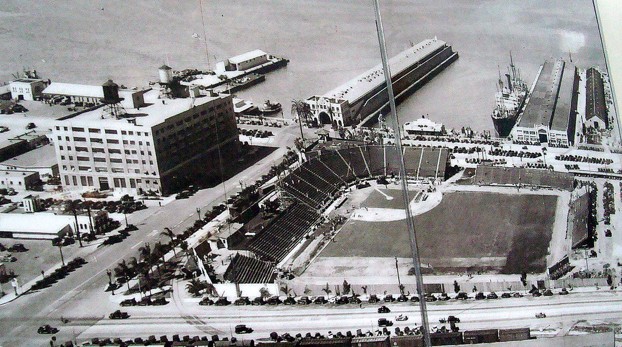Lane Field holds a significant place in San Diego’s rich history. This historic baseball park, named after Bill Lane – a notable figure in the city’s sporting world – served as a prominent venue for various events and activities throughout its existence. While Lane Field’s primary association is with baseball, its impact on the community and its transformation over the years add layers of intrigue to its story.
The Origins of Lane Field

Lane Field was established in 1936 as the home of the San Diego Padres, who were then part of the Pacific Coast League. The ballpark was constructed on a site near the waterfront in downtown San Diego. The location was a strategic choice, providing easy access for fans and leveraging the scenic beauty of the waterfront.
Bill Lane’s Influence

Bill Lane, the park’s namesake, was instrumental in bringing professional baseball to San Diego. His passion for the sport and his dedication to the community were key factors in the creation of Lane Field. Lane’s vision was to create a venue that would not only host baseball games but also serve as a hub for community events and entertainment.
The Golden Era of Lane Field

From the late 1930s through the 1950s, Lane Field was at the heart of San Diego’s sports scene. The Padres, under its roof, became a beloved team, drawing large crowds and fostering a strong sense of community. The ballpark’s intimate setting, with a seating capacity of around 8,000, allowed fans to connect closely with the game and the players.
Notable Events and Players


Lane Field was graced by several notable players who went on to achieve great success in Major League Baseball. Among these were Ted Williams, who played for the Padres before becoming a legendary figure with the Boston Red Sox, and Bobby Doerr, another future Hall of Famer. The ballpark also hosted numerous other events, including boxing matches, concerts, and community gatherings, making it a versatile venue for the city.
Decline and Demolition
As the years went by, Lane Field faced challenges that eventually led to its decline. The growing popularity of television and changing entertainment preferences resulted in dwindling attendance. By the late 1950s, the Padres had moved to a new location, and Lane Field’s future became uncertain.
In 1960, the decision was made to demolish Lane Field. The site where the ballpark once stood was repurposed for other developments, marking the end of an era for San Diego’s original baseball venue. However, the memories and the impact of Lane Field on the community have endured.
Legacy and Commemoration
Despite its demolition, Lane Field’s legacy lives on in San Diego. The site where it once stood is now part of the Lane Field Park, a public space that commemorates the ballpark’s history. Plaques, markers, and informational displays provide visitors with a glimpse into the past and the significance of Lane Field to the city’s culture and heritage.
Modern Developments



In recent years, the area around the former Lane Field site has seen significant development. Hotels, restaurants, and other commercial establishments have sprung up, transforming the landscape while paying homage to the historical significance of the site. These developments have revitalized the waterfront district, making it a vibrant part of downtown San Diego.
Lane Field may no longer exist as a physical structure, but its impact on San Diego’s history is undeniable. From its origins as the home of the Padres to its role as a community gathering place, Lane Field holds a cherished place in the hearts of many San Diegans. As the city continues to grow and evolve, the legacy of Lane Field serves as a reminder of the importance of preserving and honoring our shared history.

